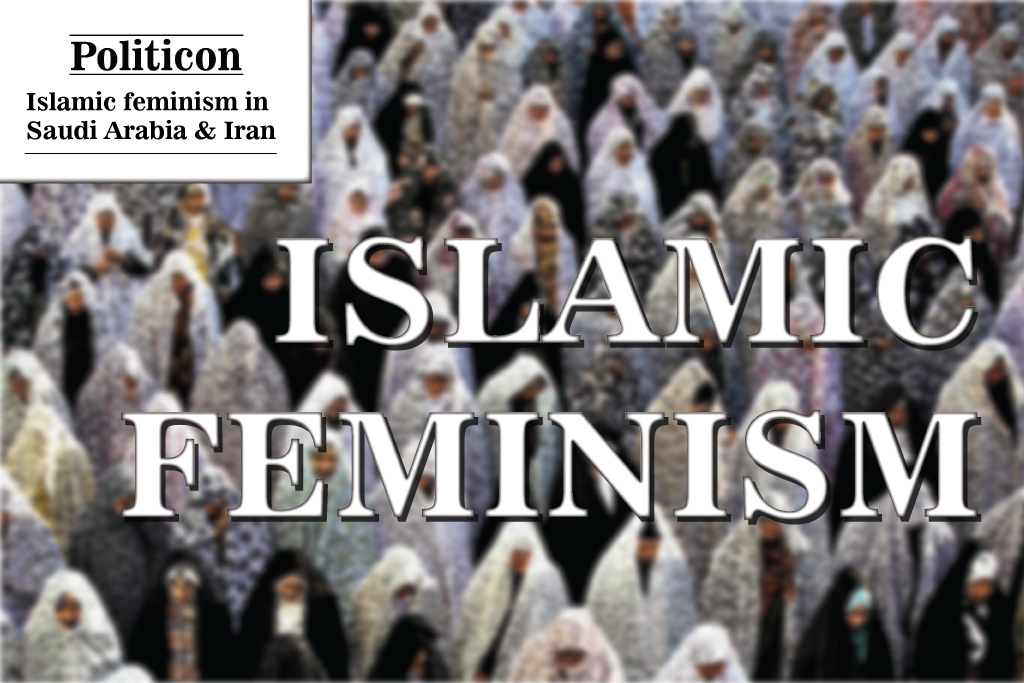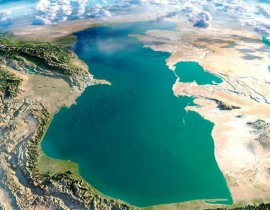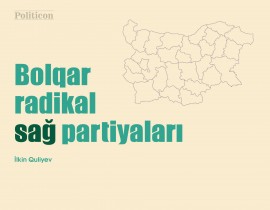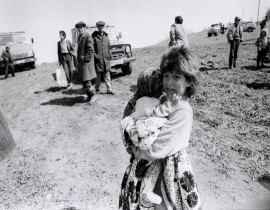Politicon.co
Islamic feminism: The Kingdom of Saudi Arabia and the Islamic Republic of Iran cases

It is interesting to note that in the modern world, people tend to focus on "Western feminism", which is well known and formally originated in the 19th century in favor of women’s suffrage. Throughout history, western women demanded rights and citizenship, which resulted in the rise of feminism in the West. The Western feminism, in contrast to the East, was a product of the rise of capitalism, and its modernist culture and politics. Unlike Western feminism, the term "Islamic feminism" has received much less attention, and it only emerged in the research world at the end of the 20th century. However, since the 1990s, women's rights in the Islamic world have become a rather controversial topic among both Muslim and Western scholars. While some support the development of Islamic feminism as it can reform Islamic communities, others believe that it is an inadequate tool for achieving gender equality and could destroy non-Western civilizations.
While Islamic feminism is considered a recent phenomenon, its origins can be found in the scriptures. Before the advent of Islam, the practice of burying newborn girls alive was popular among the people. Nevertheless, with the advent of Islam in the 7th century, the position of women improved since the killing of newborn girls is forbidden in the Quran. Despite the fact that scholars began to talk about Islamic feminism quite recently, the Quran gave women all rights almost one thousand three hundred years ago. Prophet Muhammad urged to treat daughters with love and proclaimed their rights to marriage, divorce, education and other social and political activities for both sexes. As a result, activists today argue that the violation of women's rights in the Islamic world lies not in the Quran, but in its interpretation by men.
Origins
In fact, the connotation of Islam and feminism dates back to the 1890s. Egypt was the country that gave birth to feminism in the Muslim world. The people in Egypt used Islamic reformist arguments to sever the link between Islam and repressive methods that used religion as an excuse. It changed the lives of women and their relationship with men, as feminism became entangled in the growing discourse of secular nationalism, which called for equal rights for all Egyptians, be they Muslim or Christian. Consequently, feminism and Islam became allies.
Hence, activists argue that the reason religion has become an excuse for oppressing women, which was not the case in the past, is because the sacred texts of the Quran have been translated from a position favorable to patriarchal views. For example, the Quran does not mention that women are required to wear closed clothes and completely hide their faces. It is the same with domestic violence, which in most cases occurs due to the physical superiority of men over women. This phenomenon can be explained by the fact that at a time when patriarchy reigned in society, the translators of the Quran were forced to adapt to the general mood of that era.
There are many Muslim activists, and the number is growing. One of the most famous is Margot Badran, who claims that Islamic feminism originates in the Quran and seeks rights and justice for women and men there.
In fact, there are important lessons to be learned from the scriptures. “Allah, He is Great and Glorious, granted men superiority in some qualities, for instance, in physical strength, although at the same time, Allah, also by His will and wisdom, granted the woman the opportunity to give birth to children and thereby continue the human race, and men are deprived of such an opportunity.” This is not so much about the superiority of men over women, but rather, the distribution of responsibilities in the family. But in this verse, there is a hint that the family is a single whole, since Allah says: َب ْع َض ُه ْم َعلى َب ْعض (one has a degree (of advantage) over other), emphasizing that ‘one and the other’ are parts of a single whole, in spite of a certain hierarchy.
Is it possible to have Islamic feminism in Saudi Arabia?
By looking at Saudi Arabia, it can be seen that the position of women worsened. According to women’s rights activist Hatoon al-Fassi, women in the pre-Islamic period enjoyed more freedom rather than now in Saudi Arabia. She argues that the reason for that is because clerics in Saudi Arabia misinterpreted the origins of Islamic law. Moreover, limitation of women rights in Saudi Arabia originates from local traditions that are not necessarily taken from Islam.
Hatoon al-Fassi has found that unlike in Saudi Arabia, where the guard is part of cleric’s idea, in pre-Islamic period, women were more independent and able to conduct legal contracts themselves without the protector.
In 2018, five activist women Samar Badawi, Nasima al-Sadah, Nuf Abdulaziz, Maya al-Zahrani and Hatoon al-Fassi - were jailed for speaking up for women's rights, including the right to drive. It is noteworthy that in June of that year, by decree of the King of Saudi Arabia, women in the country were already allowed to drive.
UN human rights experts, in their turn, called on the Saudi Arabian authorities to release all civil society activists. They highlighted that the prisoners were convicted of peaceful activities in defense of human rights.
UN experts also condemned the accusations of terrorism against peaceful civil activists. According to them,
“The fight against terrorism should never serve as a pretext for suppressing and limiting human rights activities. We would like to remind the Government of Saudi Arabia of its obligation to protect and promote the rights of all human rights defenders who peacefully engage in lawful activities. In the context of widespread and systematic gender-based discrimination, women human rights defenders face particular threats, especially when, as in this case, their work is perceived as a challenge to entrenched stereotypes about the role of women in society.”
Interestingly, in 2019, the Saudi Arabian authorities changed their official position in relation to feminism and now the movement for women's rights in the country is no longer considered a socially dangerous phenomenon.
The Saudi Department of Counter-Extremism has removed a video describing feminism as a radical and dangerous movement as well as officials apologized for the mistakes made in this video. Consequently, the Saudi Arabian Human Rights Committee has emphasized that it is not a crime to adhere to feminism in the kingdom.
The reason for this change lies in the response of Heba Morayef, Amnesty International’s Middle East and North Africa Director, in which he said: “The statement by the Saudi Arabian State Security Agency, which describes feminism, atheism and homosexuality as extremist ideas punishable by prison and flogging, is outrageous and clearly contradicts the fictitious reformist image of the Kingdom that Crown Prince Mohammed bin Salman continues to flaunt internationally.”
Iran: Where does Islamic feminism stand?
Feminism in Iran did not take a leading position, but rather underwent nationalization, giving rise to discrepancies and interpretations of the generally accepted teaching. According to the Iranian researcher of feminism Gupranlu, feminism and gender discourse in Iran underwent restructuring, which ruled out the possibility of the hegemony of this trend.
At the beginning of the 20th century, the women’s movement in Iran was less politicized than in Europe, however, in terms of demands related to accessible universal education, “eastern” feminism differed from “western” in that Iranians sought permission to receive specialties in the field of exact sciences and arts.
The feminist movement in Iran also absorbed some of the specifics of the country's economic development - one of the main slogans of feminists was the consumption of Iranian-made goods and attracting the attention of young people, in particular girls and young women, to the ancient national techniques of handicraft production.
Nevertheless, after the Islamic Revolution, some of the basic rights were taken away from women. For instance, women in Iran were no longer able to dress freely and they were pushed to wear compulsory hijab. Consequently, sex-segregation has happened in Iran, women felt less safe in public spaces, while men were able to assault women.
Many feminists fled the country after the Islamic Revolution since they believed that limitation of women’s rights clashes with the ideology of feminism. According to historian Maxim Ilyin “feminism is a secular concept, and Islam does not accept secular interpretations”. As a result, he believes that Muslim woman, calling herself a feminist, comes into contradiction with her religion.
On the other hand, there are those who believe that the Islamic Revolution brought positive changes for Iranian women. For instance, as a result of activists’ demand for changes, the number of women working in the public sphere increased. Since activists have been advocating for changes, the regime was able to adjust.
In Lieu of a Conclusion
All in all, according to the activists, the cases of Iran and Saudi Arabia show that the oppression of women, domestic violence, the observance of strict rules in Muslim countries are the result of the rule of patriarchy, and not ideology emanating from the Quran. Islamic feminists argue that Islamic feminism originates its understanding from the Quran and seeks rights and justice for women and for men there.
But is it actually true? “Allah Almighty tells that the man is the caretaker, custodian, and guardian of the woman, who instructs her when she falls in mistake, depending upon the fact that man is excellent and better (in power, enduring and responsibility) than the woman. For this reason, the Prophethood was particular to men, and so should be the position of leadership and ruling... ‘but men have a degree (of advantage) over them.’ ‘P.B.U.H’ said: ‘The best woman is a wife, if you look at her, you will be pleased with her, and if you order her to do anything she will obey you, and if you are absent from her, she will keep you in herself and in your property.’ Men are the protectors and maintainers of women, because Allah has given the one more (strength) than the other, and because they support them from their means.” In other words, according to this Surah, a man should not be a domestic tyrant, since religion restricts his rights, but at the same time he is considered the main member of the family. While men have more leadership opportunities and should guide women, the Quran discourages men from having women as advisers. Hence, while Islamic feminists argue that Islamic feminism takes its origins from the Quran and provides equal rights for both men and women, it is not completely true. While these activists focus on the Quran, it seems that they tend to ignore the concept of feminism.
Consequently, while this religion is about different responsibilities of men and women, it clearly demonstrates that it contains the idea of an inequality between men and women. The reason is that the difference in responsibilities and skills leads to distinctive functions in the family and society that men and women share. This fixed identity of women and men in Islam contrasts with the pluralism that feminism demands.
As a result, I tend to agree with those who are skeptical about Islamic feminism. While the cases of Saudi Arabia and Iran show that Muslim women achieved some changes, those changes are not sufficient to reach equality between women and men. In order to do that, activists should fight for the equal rights not on the basis that they are Muslim women, but because they are first of all human beings.
![]()
- TAGS :
- Iran
- Saudi Arabia
- feminism
- REGIONS :
- Middle East and North Africa








jpg-1599133320.jpg)

